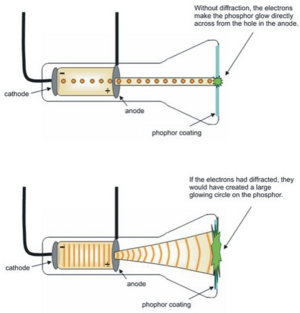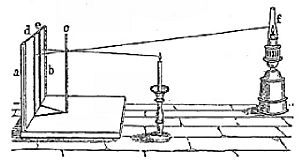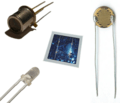Sensor facts for kids
A sensor is a clever device that measures something in the world around us and then turns that measurement into information we can understand. Think of it like a translator! For example, a thermometer measures how hot or cold something is (the temperature) and shows it as a line of liquid that goes up or down. Video cameras and digital cameras use special sensors to capture light and turn it into the pictures you see.
There are many different kinds of sensors all around us. Some are built into everyday things, while others are separate tools used for specific jobs.
Contents
What is a Sensor?
A sensor is a tool that detects changes in its environment. It measures a "physical quantity," which is just a fancy way of saying things like temperature, light, pressure, or movement. After measuring, the sensor turns this information into a "signal." This signal can be something a person can read, like numbers on a screen, or it can be a signal that another machine can understand, like an electrical pulse.
How Do Sensors Work?
Sensors work by reacting to what they are designed to measure. When they detect a change, they produce an output. This output could be an electrical signal, a change in light, or even a physical movement. This signal then goes to another device, like a computer or a display, which can use the information. For example, a sensor in your phone knows when you turn it sideways and rotates the screen!
Different Kinds of Sensors
Sensors are everywhere, doing all sorts of jobs. They can be grouped by what they measure.
Heat and Temperature Sensors
These sensors detect how hot or cold something is. They are super important for keeping things safe and working correctly.
- Temperature sensors: These include thermometers that measure body temperature or the weather, and thermostats that control the temperature in your home.
- Heat sensors: Some sensors, like bolometers and calorimeters, are used to measure heat energy. Thermal sensors are often found in laptops and computers. They sound an alarm if the computer gets too hot, helping to prevent damage.
Electric and Magnetic Sensors
These sensors measure things related to electricity and magnetism. They help us understand and control electrical systems.
- Electrical resistance sensors: An ohmmeter measures how much a material resists electricity flowing through it.
- Electrical voltage sensors: A voltmeter measures the electrical "push" or voltage in a circuit.
- Electrical power sensors: A watt-hour meter measures how much electricity is being used over time, like the meter on the side of your house.
- Magnetism sensors: A magnetic compass uses a sensor to detect the Earth's magnetic field, showing you which way is north.
- Metal detectors: These devices use magnetic fields to find hidden metal objects.
- Radar: Radar uses radio waves to detect objects and measure their distance and speed.
Some sensors are designed to find tiny particles like photons (light particles) or electrons. A simple white wall can act as a sensor when a laser beam hits it, showing a bright spot. Similarly, when an electron hits special materials called phosphors on a screen, it makes the screen glow, which is how old TV screens worked.
Movement and Pressure Sensors
These sensors are designed to detect physical movement or force.
- Pressure sensors: A barometer is a type of pressure sensor that measures air pressure, which helps predict weather changes.
- Vibration and shock sensors: These detect shaking or sudden impacts. They are used in things like car airbags to know when to deploy.
Sensors in Cars
Modern cars are full of sensors that make driving safer and easier.
- Reversing sensor: These sensors help drivers park by detecting objects behind the car and beeping if you get too close.
- Curb feeler: These are simple sensors that let a driver know if they are too close to a curb.
Images for kids
-
Different types of light sensors that detect light.
-
An infrared sensor that can "see" heat.
-
A Lidar sensor on an iPad Pro that uses light to measure distances.
See also
 In Spanish: Sensor para niños
In Spanish: Sensor para niños







